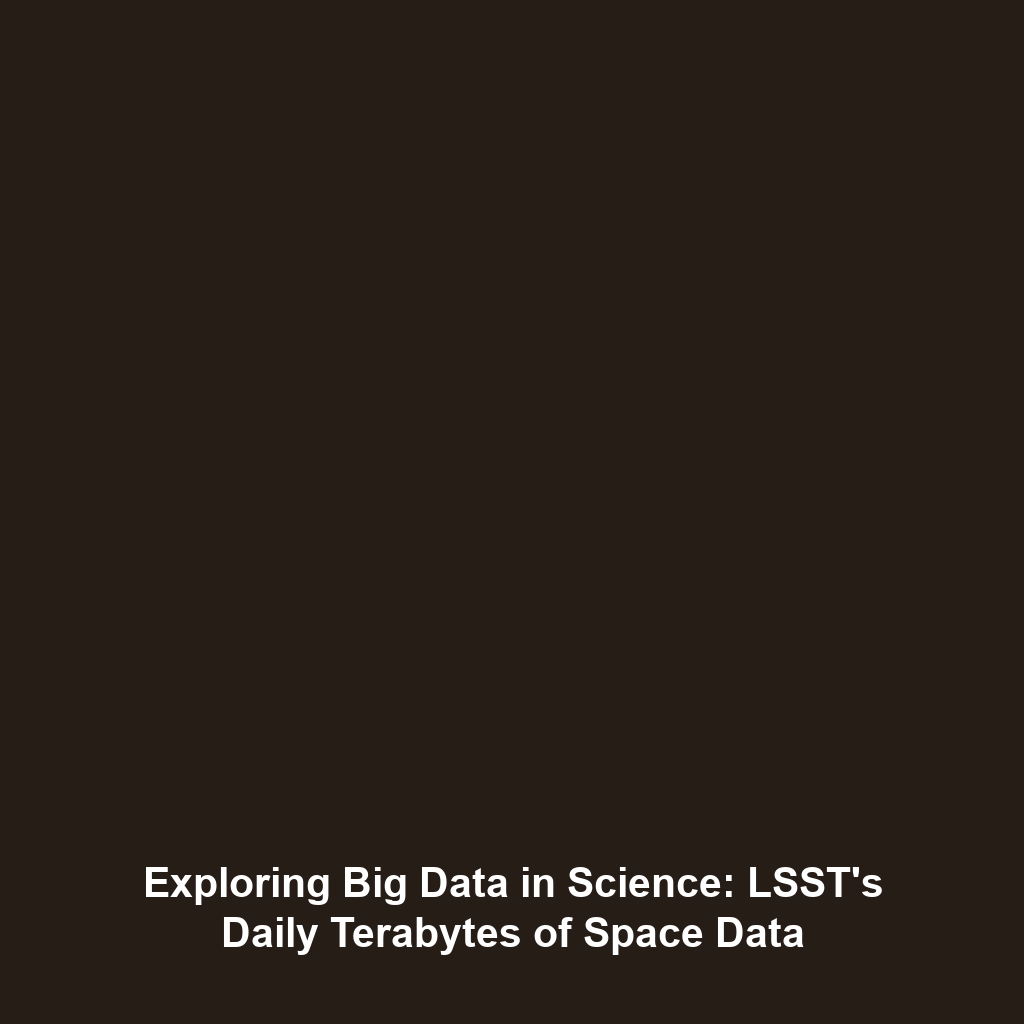Big Data in Science: Impact of the Large Synoptic Survey Telescope (LSST)
Introduction
The Large Synoptic Survey Telescope (LSST) represents a significant advancement in astronomical instruments, generating an astounding terabytes of data daily from its extensive space observations. As part of the evolving field of Big Data in Science, the LSST plays a crucial role in capturing dynamic phenomena occurring across the universe. This vast influx of data not only aids astronomers in understanding celestial events but also exemplifies the intersection of technology and discovery in modern science.
Key Concepts
Understanding the LSST
The LSST is designed to survey the entire visible sky every few nights, creating an unprecedented dataset that enables a wealth of scientific exploration. Key principles that underpin its operation include:
- Data Collection: The LSST’s advanced sensors collect light from millions of celestial objects, generating massive datasets.
- Data Processing: Complex algorithms analyze this data, identifying changes, transients, and important astronomical events.
- Data Sharing: The observatory’s commitment to data accessibility allows researchers worldwide to leverage this valuable information.
Applications and Real-World Uses
The Large Synoptic Survey Telescope is pivotal in various real-world applications within Big Data in Science, demonstrating how its massive data is utilized:
- Mapping Dark Matter: LSST aids in mapping the distribution of dark matter across the cosmos through galaxy clustering.
- Monitoring Near-Earth Objects: It assists in tracking asteroids and comets with potential Earth impact risks.
- Studying Supernovae: By monitoring brightness variations, LSST contributes to the understanding of stellar explosions.
Current Challenges
Despite its groundbreaking capabilities, the LSST also faces several challenges in Big Data in Science:
- Data Management: Handling terabytes of data necessitates robust data storage and processing solutions.
- Data Analysis: The complexity of extracting meaningful insights from vast datasets presents analytical challenges.
- Collaboration: Ensuring seamless collaboration among global researchers requires standardized protocols.
Future Research and Innovations
The future of LSST is bright, with numerous future-oriented innovations anticipated to enhance its capabilities:
- Machine Learning: Advanced algorithms could significantly improve data analysis processes.
- Improved Imaging Technologies: Next-generation sensors can boost the quality of captured data.
- Integrated Platforms: Enhanced data-sharing platforms may facilitate more collaborative research environments.
Conclusion
In summary, the Large Synoptic Survey Telescope (LSST) stands at the forefront of Big Data in Science, providing invaluable insights into our universe through its astronomical data generation. As we continue to explore the cosmos, the innovations arising from LSST’s capabilities will undoubtedly drive future research. For further reading on related topics, check out our articles on Big Data Research and Astrophysics Advances.
